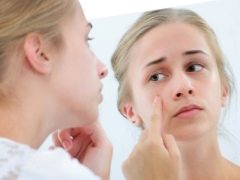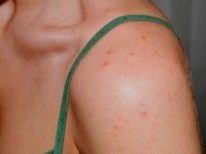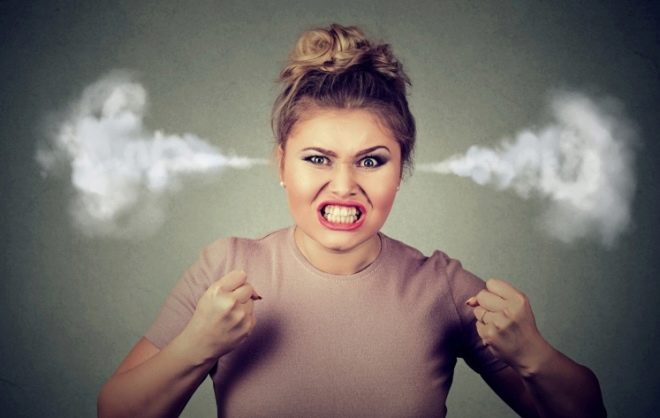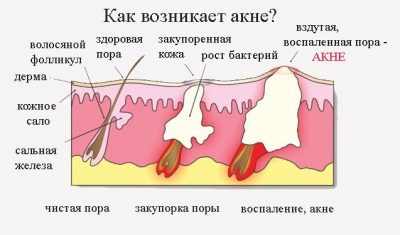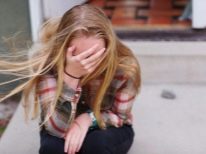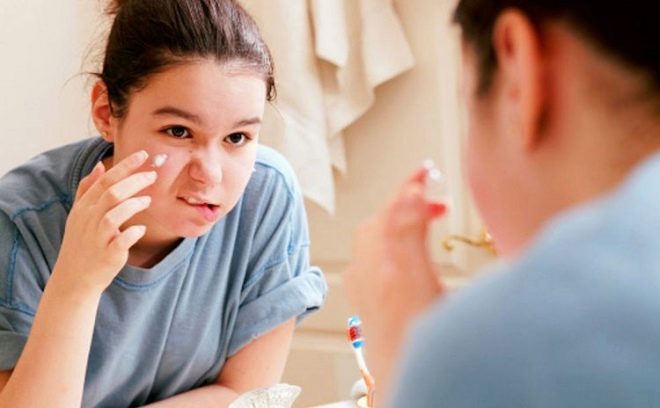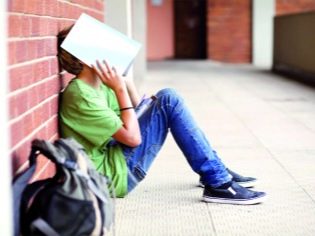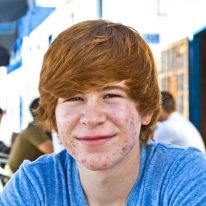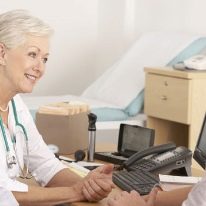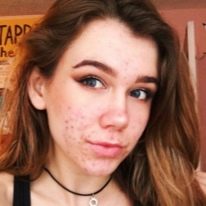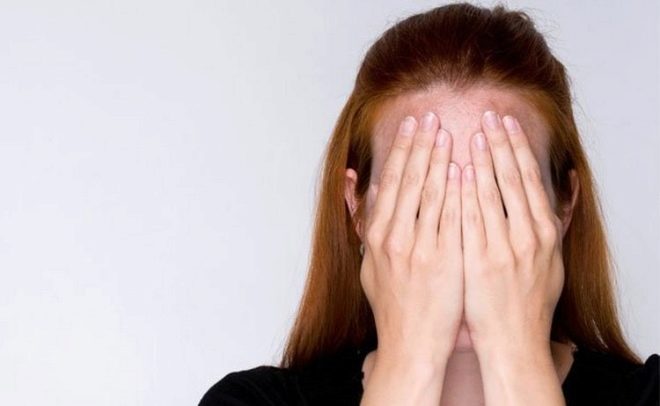Psychosomatics of acne in children and adults
Acne (acne) in any medical directory is designated as a problem peculiar to not only adolescents, but also adults. And all reference books begin the description of the disease by indicating that the causes of the pathology remain obscure to date. Only predisposing factors are indicated - hormonal changes, metabolic disorders at the cellular level of the skin, violation of hygiene rules, and so on.
In the meantime, psychosomatic medicine, which studies human health, in terms of the connection between physical and psychological, knows the answer to the question of where acne comes from.
In this article we will look at the psychosomatic aspects of acne and some other skin problems.
Acne - what is it?
Acne on the face, back or other parts of the body, from the point of view of official medicine, is a disruption of the sebaceous gland, at which its blockage and subsequent inflammation occurs.
Acne most often starts during puberty, which doctors associate with an increased production of sex hormones and, as a result, a breakdown of the sebaceous glands, manifested by increased secretion. In adults, acne is most commonly associated with the use of certain cosmetics, especially on the basis of paraffin, and in an unfavorable climate, such as heat or too high humidity.
Not the last place is given to genetics - parents, who themselves suffer from acne, very often pass it on to their children.
Nervous acne is also quite common. Adolescent acne, and rash in women before menstruation, and any other acne, the occurrence of which cannot be explained by other reasons closer to medicine, are habitually attributed to such cases.
For treatment in medicine, it is common to use hormones, antiseptics, external means with a drying and disinfecting effect. And also recommend changing the diet and lifestyle. When acne infection, suppuration, the formation of a boil, prescribe antibacterial drugs.
Treatment, therefore, is based on the elimination of external manifestation. The causes are often unknown, but because traditional medicine causes acne does not cure.
Acne on the face in psychosomatic medicine
A special area of medical science - psychosomatics does not consider acne as just a skin problem or a human hormone problem. With great respect for the theory of mechanical onset of acne, hormonal and other, psychosomatics still has its own opinion on why acne appears, and how to deal with it.
The sebaceous glands, which are on the skin of each person, perform a protective function. They produce a secret that additionally protects the skin from disease-causing bacteria, adverse climate change, and so on. They increase the elasticity of the skin, thereby making the protection more reliable. In this way, Increased sebaceous gland activity is not only a consequence of hormonal changes, but also a strong need for protection.
If he feels threatened, unsure of himself, feels a sense of his own insecurity, the process of excessive sebaceous glands is regulated at the level of the central nervous system.Subconsciously, a person is trying to create an additional protective layer for himself.
Up to a certain age, most children do not think about their safety issues, since this issue is effectively addressed by their parents or other adults who raise the child. With the advent of puberty, much is changing - there is a need for separation from guardianship, but at the same time there is no certainty that this life can be managed alone.
The feeling of insecurity is sharpening, along with it comes the fears - to be ugly, not to like someone, not to fit the image on the cover.
The lack of personal life experience makes a teenager very dependent on the opinions of others. Anxiety is growing, and at one point, at the level of the central nervous system, the process of more active work of the sebaceous glands is launched in order to protect against the horrors of the surrounding world.
Teens are different. Some are brought up with a sense of their own uniqueness, others always and always doubt and cannot form their own opinion about themselves. The second is the majority. And therefore the number of cases of adolescent acne - the majority.
If an adult suffers from acne, with high probability, he took out a huge number of complexes from adolescence. The installations that were formed at a young age - “My home is my fortress”, “It’s only safe where everything is familiar” influence.
Such people lose their sense of security at the slightest exit from the comfort zone - a trip, a business trip, a divorce, a move to a new place of residence. It is during such stressful moments in adults with incorrect attitudes regarding safety and safe places that the face or another part of the body blossoms with acne.
Thus, acne in children and adults is a sign of a violation of ideas about their own safety.
Such violations can manifest themselves in different ways. Much depends on how old the patient is, what gender he belongs to, what temperament he belongs to, and also on individual character traits.
Development mechanisms
Due to the sensation of a possible threat, inner demands in a more reliable defense, a person can “quarrel with the outside world”, limit contacts with him - this is how furunculosis manifests itself by heavy, frightening eruptions. He is “needed” by the patient, since he himself “ordered” him to limit communication with people. Boils he asks to leave him alone for what he is, do not try to change it.
Small acne rash most often occurs in the internal conflict between the desire to like and communicate and the inability to do so because of their own lack of confidence in their attractiveness. In some cases, the cause of such teenage acne should be sought in insufficient emotional contact with the mother.
If the parents are too strict and authoritarian, then the child’s feelings get used to being depressed. As a result, these children, whose opinions are not very interested by moms and dads, suffer from the most extensive and intractable acne.
In children and adults who are prone to one-time, but vivid manifestations of anger, outbursts of anger, most often acne does not appear all the time, but occasionally. Usually immediately after the discharge of negative emotions.
Localization matters!
Of course, in psychosomatics a lot of individual, but there is some pattern between the place where the rash occurred, and the reason for their appearance. In any case, the place may prompt the experienced psychoanalyst or psychosomat about the area of life in which the root of the problem should be sought.
- Rash on the face - almost always mean that you should more carefully look for the causes of fears and uncertainties in the identity of the person. The more abundant the rash, the more insecure he feels. The accumulation of a rash on the forehead - the fear of condemnation, of public opinion, the fear of "losing face", dependence on public opinion.
- Acne on the nose or chin in women, men and adolescents They may well talk about strong stress, about the fear of the future, about the insecurity with which they look to this future.
- Skin rashes on the shoulders, neck and back most often they are characterized by responsible, even excessively responsible, people who are used to putting heavy moral and emotional burden on their shoulders. The stronger the internal conflict, in which you want to lose your burden, but the feeling of guilt gnaws, the more severe the acne will be in these areas.
- Pimples on the buttocks They talk about disorders of the personal, sexual or emotional spheres, about problems in a relationship with a partner. In adolescents such acne on the pope may be associated with the inability to release sexual energy.
- Acne on the ear, head (in the hairy part) they say that it is necessary to look for the cause in fear of criticism, which the patient most likely suffers. Either it is, indeed, excessive, and self-esteem has suffered, or it was invented by the person himself to justify his unwillingness to hear and perceive the opinions of others.
- Purulent acne - aggression, irritability. Subcutaneous - hard inner experiences that can not go out in any way, the painful inner burden of shame, fear, disappointment (usually in oneself or in very close people).
What do researchers think?
Popular all over the world, Louise Hay believed that acne is a sign of self-loathing and offered to deal with them with positive affirmations that are designed to replace the negative attitude towards self-love.
According to the descriptions of Liz Burbo, acne is always associated with the subconscious desire to be alone, not to let yourself be seen by others. The more he wants to go unnoticed due to insufficiently high self-esteem, the more pronounced and acne is manifested.
Adult acne Liz connects with the desire to seem not at all what a person is. In this case, the psychologist puts the fear of loneliness in the first place, a violation of safe and familiar relations, which, according to the psychologist, are forced to be not themselves.
Dr. Valery Sinelnikov believes that teen acne, in general, should not embarrass anyone, their appearance is the first lesson of love for a mature man.
The teenager learns to love himself first of all, anyone, and with acne as well. This lesson is very important if it is successfully completed, acne quickly “overgrows” and is well treatable.
If a teenager does not learn a lesson, the subconscious with the stubbornness of a patient teacher will return to the topic again and again - this is how adults appear who suffer from acne and don’t want to learn to accept themselves, to love as they are.
Bodo Baginski and Sharamon Shalila view acne as a result of the suppression of strong emotions, mainly anger and irritability.
Oleg Torsunov, known for his categorical approach to psychosomatic issues, assures that such low feelings as greed, depravity of mind, and laziness are to blame for everything.
Treatment
To refuse traditional treatment is not worth it. It will help eliminate the external manifestations of internal problems. But without awareness of the second and rethinking the situation of acne can not get rid of - acne will return again and again. Squeezing acne is a subconscious attempt to get rid of the problem, but it is not only dangerous because of the very material infection of the wound, but it can also drive the internal problem to a deeper level. What to do?
Learn to relax, consult with a psychologist, find a reason from the spectrum described by us and do everything to eliminate it - learn to accept and love yourself, do something that will increase self-esteem, look more confidently in tomorrow's day.
